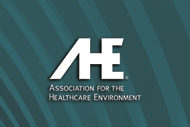As budgeting time arrives, environmental services (ES) professionals begin working on department costs for next year. One of the biggest expenses in a department budget is labor. To help manage these costs, here are the four steps to building a staffing analysis for ES departments.
Step 1: Time studies. This is the ground-level analysis, which is closest to the front lines. A time study is a method to see how much time is required to complete a task in a given area. In other words, count room-by-room and area-by-area to build eight-hour area assignments. Both AHE and ISSA have published guidelines that document cleaning time standards. There are also a few software programs available that will help to do this same analysis. I haven't had the pleasure of using the programs, but I know a few users who really like the software.
Step 2: Area assignments. An area assignment is a document that shows everything that needs to be cleaned during one eight-hour shift. Some managers will refer to them as schedules. For example, a housekeeper on first shift will log 24 daily cleans, three to four checkouts, and ancillary areas. With break and lunch, it totals eight hours. The team member normally turns in his or her sheets to the supervisor at the end of shift.
Step 3: Labor matrix. A labor matrix shows all areas that are cleaned, along with frequency and number of assigned personnel. It's usually done in an Excel spreadsheet and contains all the sensitive information on number of full-time equivalent (FTE) employees for each facility. This is my favorite category and where I spend the most time sharing information with administration and finance. It contains specific information telling where the rubber meets the road on staffing.
Step 4: Industry benchmark standards. Most companies aim at a target of 1,200 to 1,400 square feet per man-hour — 1,200 square feet per man-hour implies heavy staffing, and 1,400 square feet per man-hour implies Lean staffing. These benchmarks should be taken with a grain of salt. If an emergency room is one of the busiest in the state, the benchmarks don't apply. The same can be said for a busy labor-and-delivery department. There are many exceptions to this rule. It's meant to be used as a measure to indicate if staffing is within normal range.
For example, a community hospital of 250,000 cleanable square feet targeting 1,300 square feet per man-hour will require 192.31 man-hours. At seven hours per day, this will equal 27.47 productive FTEs. After being multiplied by a 1.1 benefit factor, the hospital will require 30.22 paid FTEs.
Again, there are many exceptions to benchmark standards. It's simply a gauge to see if staffing is within normal range. Any exceptions can be highlighted or explained in the labor matrix.
There you have it: a brief overview to building an ES department staffing analysis. Remember to talk about your staffing plan early and often with hospital leadership. Good luck on budgeting and I hope it's a great year for everyone.
By Doug Rothermel, CHESP, director of environmental services at St. Joseph's Hospital, Tampa, Fla., and an AHE board member at large for 2014–2016.
AHE insight
Valuable resources available
AHE represents, defines and advances the professionals responsible for care of the health care environment to ensure high-quality outcomes and healthy communities. Here are a few of the resources that AHE offers.
• Recommended Practice Series: Environmental Services Equipment and Supplies. The equipment and supplies covered in this booklet are essential, discrete components of safe, efficient and productive environmental services (ES) operations. For more information, go to www.ahe.org/ahe/learn/tools_and_resources/publications.shtml.
• Expanding Your Influence in Today's Healthcare Environment. What skills must you develop to expand your influence and position ES as a department to be reckoned with? This prerecorded webinar explores effective communication skills and how emotional intelligence can be leveraged to influence others. To access it, log on to www.ahe.org/education.
• AHE Environmental Sustainability Certificate Program. AHE has launched a new certificate program to acknowledge the ongoing and outstanding environment and ecological sustainability efforts of ES departments. For more information on the program, go to www.ahe.org/ahe/lead/environmental_sustainability_certificate_program.shtml.



